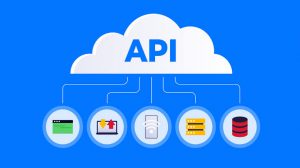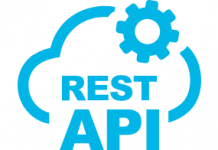
API stands for Application Programming Interface. An API is a set of programming instructions and standards for accessing a web-based software application or web tool. Essentially, an API allows different software systems to communicate with each other.
An API is a way for developers to build software that can interact with other software, without having to understand the underlying details of how that software works. APIs provide a standard set of rules for how to access certain functionality, data, or resources of an application, which makes it easier for developers to integrate different systems together.
For example, if you wanted to build an app that retrieves data from a weather website, you could use that website’s API to access the data directly, rather than having to scrape the website’s data yourself. Similarly, many social media platforms offer APIs that allow developers to build applications that can interact with their services, such as retrieving user data or posting updates.
Types of APIs
There are several types of APIs, including:
-
REST APIs: Representational State Transfer (REST) APIs are the most common type of API used on the web. They use HTTP requests to retrieve and send data in a standard format such as JSON or XML. REST APIs allow users to perform CRUD (Create, Read, Update, and Delete) operations on resources such as user accounts or data records.
-
SOAP APIs: Simple Object Access Protocol (SOAP) APIs are a more complex type of API that use XML messages to communicate between systems. SOAP APIs are typically used for enterprise-level integrations, such as between different business systems.
-
GraphQL APIs: GraphQL is a query language that allows developers to define the structure of the data they need and receive only that data, rather than receiving a full response as with REST APIs. GraphQL APIs are gaining popularity as a way to optimize data retrieval for client applications.
-
Webhooks: A webhook is a way for an application to notify another application about a specific event, such as a new user registration or a payment confirmation. Instead of constantly polling for updates, the receiving application subscribes to a webhook, which sends a notification when the event occurs.
-
Open APIs: Open APIs are public APIs that are available to anyone who wants to use them. Open APIs are often used by developers to create third-party applications that interact with a service or platform.
These are just a few examples of the many types of APIs available. Different APIs may be more appropriate for different use cases and scenarios, depending on factors such as security requirements, data complexity, and integration needs.
Power of APIs
APIs are incredibly powerful tools for developers, businesses, and consumers alike. Here are a few key reasons why:
-
Integration: APIs allow different software systems to integrate and communicate with each other, which can streamline workflows and reduce manual data entry. This can lead to increased efficiency and productivity, as well as cost savings.
-
Innovation: APIs enable developers to build new applications and services that can interact with existing systems and data sources. This can lead to innovation and the creation of new products and services that would not have been possible otherwise.
-
Customization: APIs allow users to customize their experiences with software and web applications. For example, an e-commerce company might provide an API that allows users to build custom storefronts or product recommendation engines.
-
Scalability: APIs can help businesses and applications scale by allowing them to access additional resources and data as needed. For example, a social media platform might use APIs to handle large amounts of user data and requests.
-
Accessibility: APIs can make data and services more accessible to a wider range of users and applications. This can promote collaboration and open up new opportunities for businesses and developers.
Overall, APIs are powerful tools that can help businesses and developers innovate, streamline workflows, and provide better user experiences. As more data and services become available through APIs, we can expect to see even more innovation and growth in the technology industry.
How to use APIs
Using an API typically involves the following steps:
-
Find an API: First, you need to identify an API that provides the functionality you need. Many APIs are publicly available and can be found by searching online or through developer portals.
-
Understand the API documentation: Once you have found an API, you should review its documentation to understand how it works, what data it provides, and what endpoints are available.
-
Get API credentials: Many APIs require authentication or access keys in order to use them. You will need to obtain these credentials by registering with the API provider.
-
Test the API: Before you start building your application or service, you should test the API to ensure that it works as expected. Many API providers provide sandbox environments for testing.
-
Integrate the API: Once you have tested the API and understand how it works, you can start integrating it into your application or service. This will typically involve making API requests, parsing the responses, and using the data provided by the API in your application.
-
Monitor and maintain the API: Finally, it’s important to monitor your usage of the API and ensure that you stay within any usage limits or quotas. You should also stay up-to-date with any changes to the API and adjust your application or service as needed.
Overall, using an API can be a powerful way to access data and functionality that would otherwise be difficult or impossible to obtain. By following these steps and carefully integrating the API into your application, you can create powerful and innovative products and services that leverage the capabilities of other software systems.
For exploring the world of APIs, get yourself acquainted with basic programming languages such as JAVA, Python, SQL, etc. You can go through the website of Edureify for more information.
Master Your Coding Skills with BootSelf AI
If you're looking to enhance your coding abilities and upskill in artificial intelligence, look no further than the BootSelf AI app. This innovative platform provides AI-based coding lessons that are tailored to your individual learning pace.
Available on both iOS and Android, you can download the BootSelf AI app and start mastering coding skills today:





